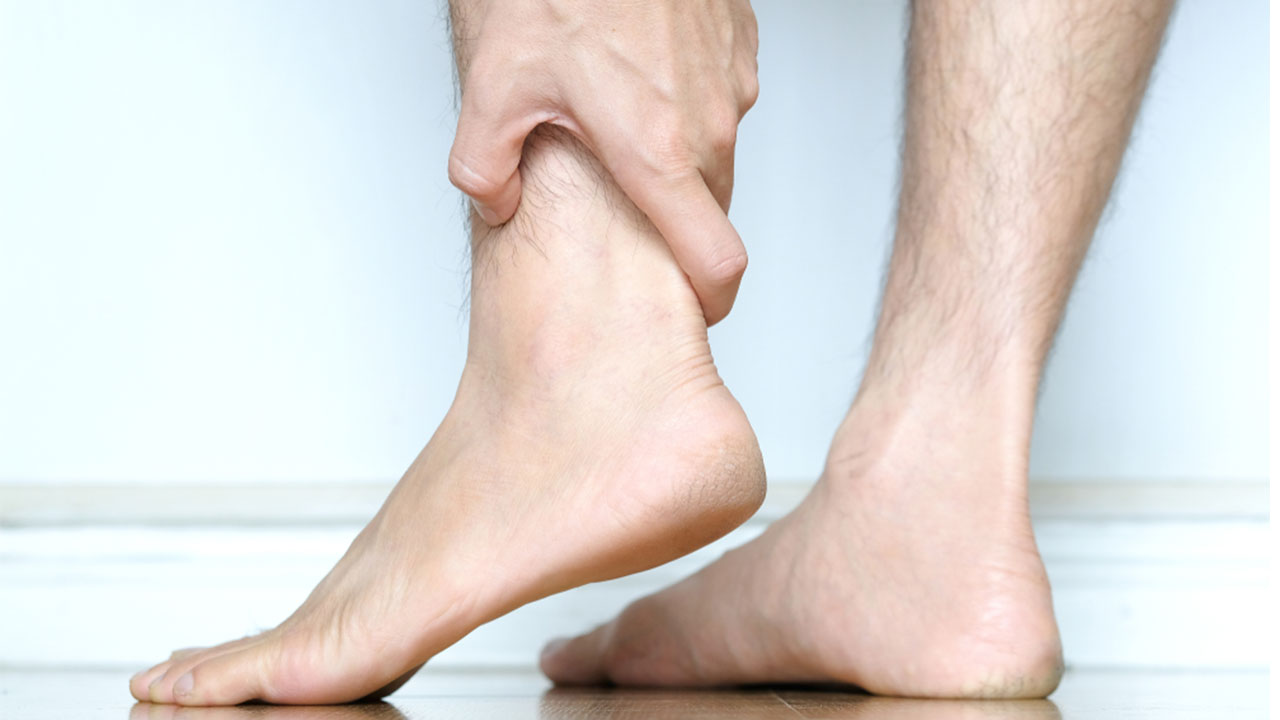Tendonitis: When Tennis Elbow Has You Down for the Game
 By: by Amino Science
By: by Amino Science

A painful condition, tendonitis involves inflammation of the tendons—fibrous cords that connect muscles to bones. Commonly occurring in the knees, heels, shoulders, elbows, and wrists, tendonitis leads to swelling and discomfort when moving the affected body part.
You might know tendonitis by the following terms:
- Jumper’s knee (patellar tendonitis)
- Tennis elbow (lateral epicondylitis)
- Golfer’s elbow (medial epicondylitis)
- Pitcher’s shoulder or swimmer’s shoulder (rotator cuff tendonitis)
Tendonitis is also spelled tendinitis, so don't let those variations confuse you. Whatever you call it, tendonitis causes pain and discomfort that can have a negative effect on quality of life. And while the condition usually improves on its own with rest, more severe cases may require physical therapy, medication, and even surgery to heal. Understanding the signs and symptoms of tendonitis is the first step in knowing when and if to seek medical attention.
Common Causes of Tendonitis
The most common causes of tendonitis are sudden injury and repetitive motions, such as from physical activities that put stress on the tendons. If proper technique isn't followed, tendonitis or tendon rupture can occur.
Risk factors for tendonitis include age— it's inevitable that as we age, our tendons become less pliable—occupation, and certain sports. Jobs that involve repetitive movements or forceful action, such as frequent overhead reaching, can cause irritation of a tendon. Sports injuries that cause tendinitis are common among tennis players, runners, golfers, swimmers, bowlers, baseball players, and basketball players.
Tennis Elbow and Tendonitis Symptoms
Wondering if you’re suffering from tennis elbow or just a mild cause of overexertion? Here are some of the primary signs and symptoms of tendinitis:
- Pain that worsens with movement
- A cracking or grating feeling around the bone
- Swelling
- A lump near the affected tendon
Despite the name, tennis elbow often occurs in people who have never picked up a racket. In fact, the condition may occur in anyone whose work or hobbies involve repetitive motions of the wrist and arm. To that end, tennis elbow is common in painters, plumbers, and carpenters as well. Older people are more likely to get tennis elbow, as tendons become less flexible with age.
If you’re suffering from persistent pain around your elbow that spreads into the forearm and wrist, or if you’ve noticed a bony bump on the outside of your elbow, don’t hesitate to seek medical attention. Left untreated, tendonitis can cause a more serious condition called tendon rupture, which often requires surgery to repair.
Tendonitis Diagnosis
Your health care provider will determine if you have tendonitis or a related condition by taking a medical history and conducting a physical examination that assesses range of motion and discomfort in the affected area. Be upfront with your work and physical activities, including any new sports you're trying out, so the doctor can consider contributing risk factors.
Your physician may also order X-rays to rule out arthritis or a fracture and blood tests to rule out conditions such as rheumatoid arthritis. Your doctor may even go a step further and order an MRI scan (magnetic resonance imaging) to see changes in the tissue around the tendon.
The type of test used is greatly determined by the area affected. For instance, the Finkelstein test helps diagnose wrist tendonitis. Your doctor will bend your thumb, fingers, and wrist in a specific manner to see if the pain that results is tied to wrist tendonitis or another type of wrist injury.
Tendonitis Treatments
There’s no one cure for tendonitis. The goal of treatment is to reduce pain and inflammation while giving the body time to heal. Some of the most effective home remedies for the condition include:
- Resting and avoiding activities that led to the injury
- Applying an ice pack to the affected area for 20 minutes every couple hours
- Using a compress or bandage on the affected area
- Elevating the limb or injured body part
- Taking over-the-counter medication, such as ibuprofen
- Taking an essential amino acid supplement to help you heal faster
It’s important to note that tendonitis can take 4 to 6 weeks to heal. However, more serious or long-lasting cases of tendonitis may require additional treatment. If rest and medication are doing little to alleviate your discomfort, you might want to see a doctor and/or physical therapist to discuss the following treatment options:
- Steroid injections to reduce inflammation and pain
- Shockwave therapy
- Platelet rich plasma injections to encourage healing
- Surgery to repair tendon ruptures and remove damaged tissue
Note that it could take 6 months for a tendon to heal completely after surgery.

Achilles Tendonitis Treatment
Athletes and other people who spend a lot of time on their feet are at risk for a type of tendonitis affecting the Achilles tendon. With Achilles tendonitis, the large tendon that runs down the back of the leg becomes inflamed. As a result, patients may suffer stiffness, swelling, and pain that worsens with activity. Treatments for Achilles tendonitis vary based on the severity of the condition and may include:
- Rest and avoiding repetitive motions
- Stretching and muscle-strengthening exercises
- Icing the area
- Elevating the affected foot
- Physical therapy
- Taking anti-inflammatories
- Wearing special shoes to take tension off the tendon
In severe cases, patients may require steroid injections or surgery to treat their Achilles tendonitis.
What Is the Difference Between Tendonitis and Tendinosis?
Tendonitis involves inflammation. When tendonitis is at play, you'll see hallmark inflammatory signs such as warmth, swelling, redness, and pain. Take wrist tendonitis, for example. Wrist tendonitis involves inflammation of the wrist tendons and is caused by either a sudden injury or repetitive motions that cause the wrist tendons to rub against the bone. Over-the-counter nonsteroidal anti-inflammatory drugs (NSAIDS) such as ibuprofen can help the pain as the tendonitis subsides over the course of several weeks.
Tendinosis, on the other hand, is chronic, which means continuous or recurring. It's caused by a repetitive trauma or overuse injuries, and can take several months to heal. The main difference between tendonitis and tendinosis is that tendinosis is the the non-inflammatory degeneration of a tendon.
Amino Acids as a Tendonitis Cure
An increasing amount of research suggests that amino acids can boost musculoskeletal health and even help repair damage. When people engage in exercise, their muscles break down more rapidly, and additional protein is required to prevent minor injuries from becoming serious ones.
According to a 2018 article titled “Nutritional Research May Be Useful in Treating Tendon Injuries,” evidence suggests that certain amino acids, including leucine, arginine, and glutamine, can aid in tendon growth and healing. However, it’s always best to consume a balanced mixture of essential amino acids to ensure optimal health and wellness.
The article goes on to reveal that tendon surgery isn’t always successful, and many patients experience chronic pain even after treatment. More research is needed to determine if amino acids could be used in therapeutic approaches to tendon injuries and other problems.
Additionally, people can protect their long-term tendon health by avoiding exercises and activities that put undue stress on tendons. It’s also smart to mix up workout routines, take time to stretch and warm up, and use ergonomic equipment in the workplace.

Up to 25% off Amino
Shop NowTAGS: conditions
Join the Community
Comments (0)
Most Craveable Recipes




 833-264-6620
833-264-6620



















